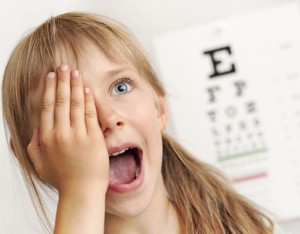“Progress is impossible without change, and those who cannot change their minds cannot change anything.” – George Bernard Shaw
Despite the rain which robbed us of much of our summer, August has arrived, which means school is not far behind. Parents, you will be registering your students for classes and scheduling physicals, vision and dental exams. This year, please consider bringing your student to us for a comprehensive vision examination instead of following your usual routine.
A comprehensive vision exam is the only one that will evaluate all 17 near-vision skills your child needs for reading, homework and laptop usage. The state of Illinois requires just 3 of those skills be tested for school registration, and the standard eye chart, which is 150 years old, evaluates blackboard vision only. Your child’s exam will not be beneficial for school learning if you rely on a school screening or basic eye exam.
If you bring your child to us, we will evaluate his or her ability to do much more than see the blackboard from 20 feet away, which is what the Snellen eye chart was designed for in the 1800s. Our world has evolved into a near-vision world, in which we spend most of our time on cell phones, tablets and computers. Perfect vision – is not 20/20 or seeing clearly just 20 feet away – it must include all areas of vision.
Here are some FACTS that we cannot continue to ignore as a progressive society:
- 75–90% of classroom learning comes through the visual system in today’s world
- 1 out of every 4 children has a vision problem which hinders learning
- School vision screenings, such as those that rely on eye charts, detect only 20% of vision problems
- 20% of schoolchildren have convergence insufficiency, which makes reading and studying difficult
- 90% of ADHD diagnoses are incorrect and often are treatable vision problems instead
- 80% of children who are reading disabled, including those with dyslexia, have vision problems that can be resolved
We recently conducted FREE vision screenings at several area schools. We followed state protocol and added a few of our own specialized tests. Sadly, at all schools, more than 60% of the students failed at least one area of the exam. Had we done our complete evaluation, the percentage would have been higher. This is because vision must be trained for optimal performance, and all too often, folks do not get the proper care or examinations or even realize a vision problem exists.
There are many eye disorders that can affect learning, which we can treat through vision therapy and other methods. Some of the most common problems are:
- Eyes that do not work together as a team
- Eyes that are misaligned
- Eyes that cannot stay focused to read
- Poor depth perception
- Poor hand-eye coordination
- Poor visual memory and comprehension
These and other vision problems can impede learning in many ways, causing the child to become fidgety or have a poor attention span, trouble understanding schoolwork, avoidance of homework, or not working up to their potential.
Our comprehensive exam tests your child’s ability to focus at all distances and the ability to sustain that focus for reading, his eye movement control, his ability to track words across a page, determine if his eyes work together properly, evaluate his depth perception, peripheral vision, fine and gross visual motor skills, visual perception and much more.
Treatment options include vision therapy, which is much like physical therapy except we train the eyes and brain to work together properly. Therapy involves games, activities, and other fun things to encourage your child’s participation. We also offer photosyntonics or colored light therapy, as well as performance lenses.
The examination will, of course, also check for disease and other conditions of the eye, as well as for the many diseases of the body which we can diagnose through the eyes.
This school year, we urge you not to repeat the same outdated vision exam your child has always received. Our society is progressing forward in technology; our vision must progress along with it.
